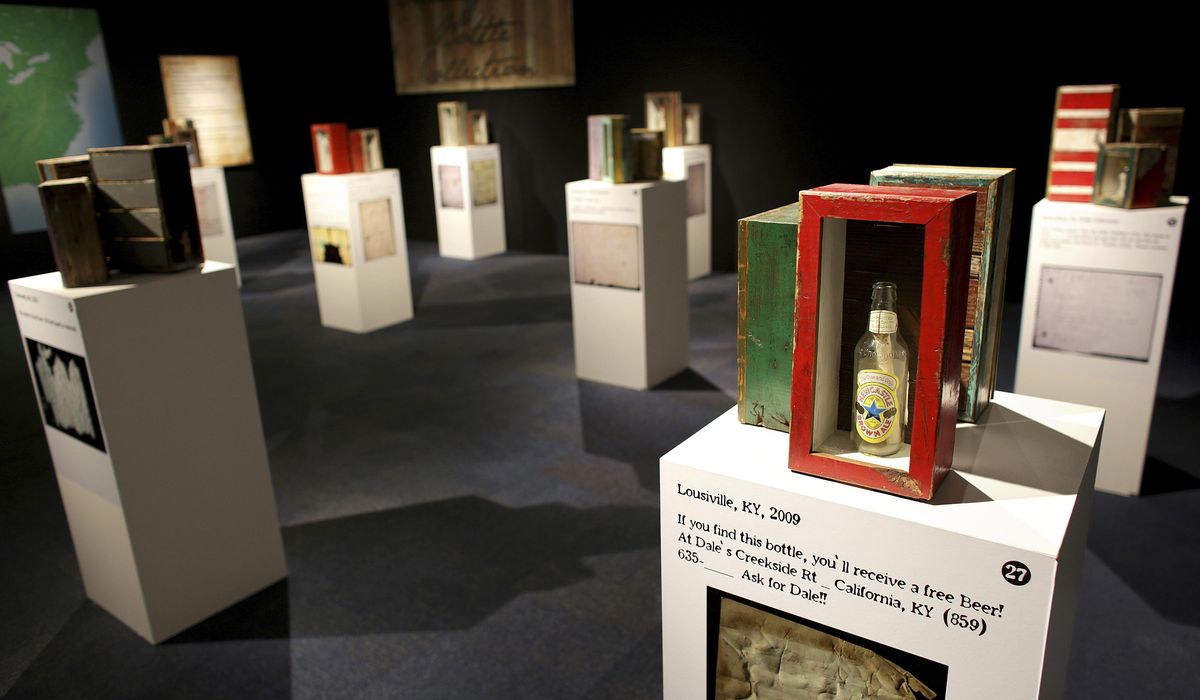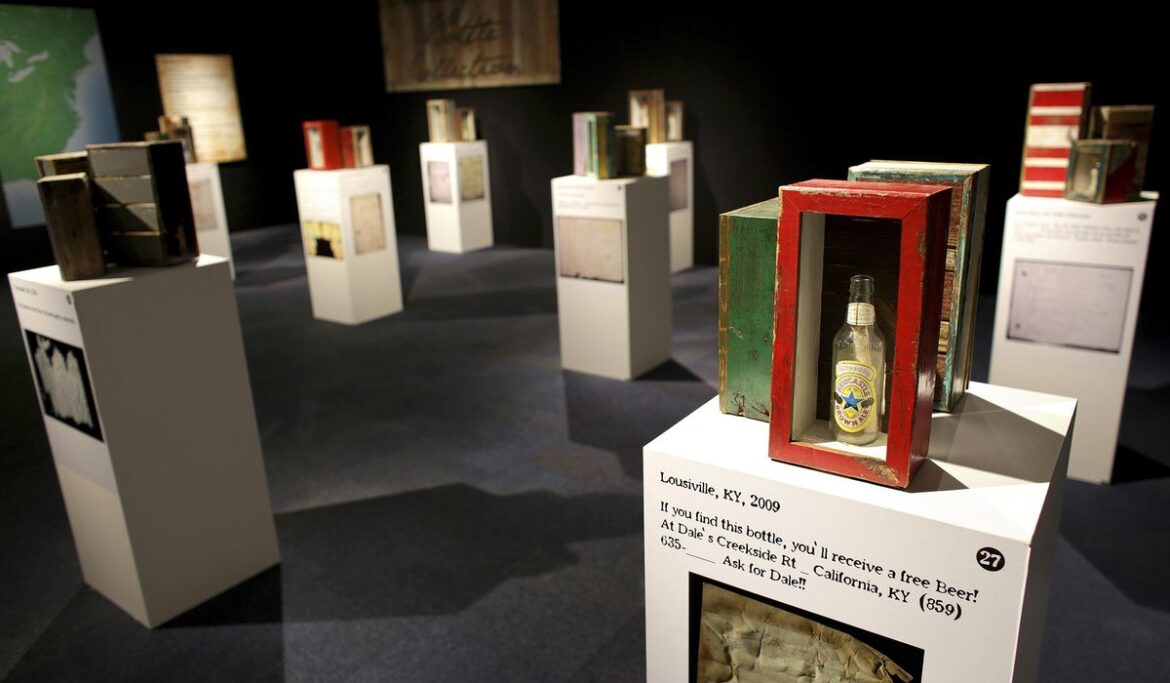
NORFOLK, Va. (AP) — When you hear of a message in a bottle, perhaps the term calls to mind faraway images of someone stranded on a remote island or penning love letters centuries ago.
But they turn up more often – and closer – than you might think.
One environmental organization has come across dozens of them while cleaning up America’s rivers: everything from treasure maps to loneliness-fueled pleas to the universe, stuffed inside glass bottles or even Gatorade containers.
Curious what’s inside? Now’s your chance to find out.
Nauticus in downtown Norfolk recently launched the “Message in a Bottle” exhibition. It runs through April 24.
The traveling exhibit is in partnership with Living Lands & Waters, an Illinois-based nonprofit that has conducted about 1,400 major river cleanups in 21 states since launching in the late 1990s.
Founder Chad Pregracke said he started the organization after growing up near the Mississippi River. He was in the water all the time, diving for mussel shells, among other activities, and constantly came across garbage.
“I wanted to do something about it because it bothered me,” he said. “I thought people would care and want to see it cleaned up. … and I was right.”
Pregracke now spends stretches of time on a barge used to clean the Mississippi and other rivers, along with towboats, workboats and cranes.
Volunteers come across all sorts of things – bowling balls, kitchen appliances. But “the top of the pyramid,” the apex, he said, is a message in a bottle.
“If you find a message in a bottle you’re kind of a king or queen,” he said. “They’re fun to find.”
When one is found, the crew takes it back to the barge and opens it to reveal the message.
“There’s that intrigue,” he said.
In some cases, they weren’t necessarily meant to be found, with the author writing to a higher power. Others include contact information and addresses.
Pregracke has occasionally been able to connect with the people who wrote them. He’s also tried investigating the occasional treasure map, to no avail.
Some bottles travel hundreds of miles from their origin, traversing creeks to end up in a major river.
Pregracke has a couple favorites from over the years.
One is a glass jar that contains a presidential portrait of President Bill Clinton.
“I thought that was kind of cool because it’s just so random,” he said.
Another was a piece of guitar sheet music found in a 40-ounce Budweiser bottle where the Wabash River meets the Ohio. It was titled “Lavender For You.” After a national newspaper did a story on it several years ago, a man called to say he’d written it for a girlfriend who broke his heart. The man also accurately described the location where it was found, which hadn’t been mentioned in the story.
Stephen Kirkland, executive director of Nauticus, said the museum reached out to Living Lands & Waters about a year ago when the staff heard of the traveling exhibit.
“We are a museum quite literally built on the banks of a river,” he said. “It’s important we share these messages of environmental conservation and stewardship.”
Though the bottles travel, Nauticus built the displays – a more artistic venture than the maritime museum usually handles. The displays describe the location, timing and contents of each message in a bottle.
“Ahoy My name is Charlie, I am 14 in 8th grade” at a school in New Jersey, one message reads, adding that the writer’s class had recently read “The Lightning Thief” and was releasing the bottle in the Delaware River. “I higly recommend the book. Please write back. Anchors Away Semper Fi.”
One soda bottle found in Washington, D.C., contains strands of human hair. A group of three vegetable oil bottles has pages from the Bible dipped in oil.
“Why? Who knows,” Kirkland said. “There’s a human element to all this that’s just cool.”
Messages in a bottle have it all, he said: romance, lore, history. Nauticus is also focusing on the conservation aspect, including programming about plastics pollution.
“Our message is, don’t do this,” Kirkland said with a laugh. “What we’re looking at basically is trash. But someone created art out of trash and it’s just gorgeous.”





